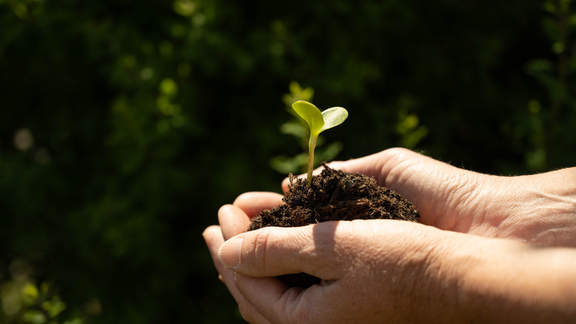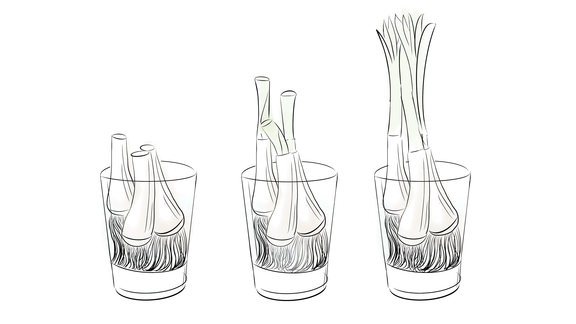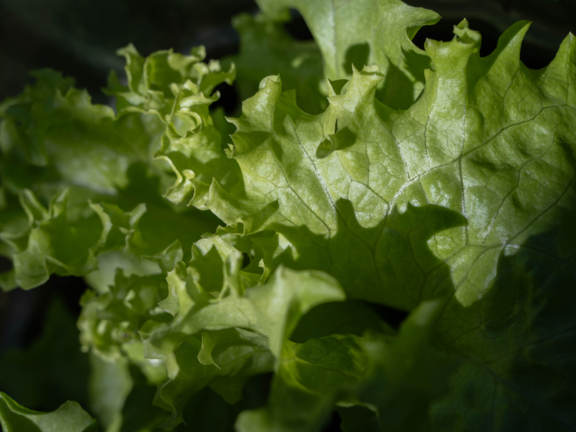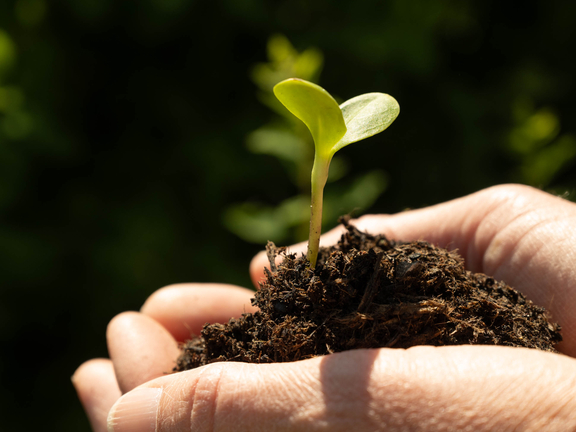

Regrowing gives vegetable scraps a new lease of life.
Learn how to grow fresh fruit and vegetables from kitchen waste - simply and sustainably. We show you which vegetables are suitable and provide step-by-step instructions.
Regrowing describes the practice of regrowing food waste. You can easily grow new plants from waste such as salad stalks, leek scraps or pieces of ginger. This reduces waste and saves you money.
Regrowing is not only sustainable, it’s also a wonderful and very easy way to do a bit of gardening, even if you live in a city apartment. That way, you can enjoy growing your own vegetables even if your crop is smaller than when you cultivate young plants.
Other ways of transforming your home into an edible urban jungle includeplanting herbs or avocado trees. Here too you can grow new plants out of an avocado stone or the seeds of last year’s basil flowers.

The basic principle of regrowing is very simple: You do not need any special equipment and can start immediately. All you need is leftover vegetables, which you are sure to find in every kitchen.

The most suitable vegetables and salads are those where the stems and leaves can be eaten. These include:
While regrowing vegetable varieties is quite easy, regrowing fruit varieties requires a little more patience. Pineapple is a good example: Cut off the upper part with the green leaves, leave it to dry for a few days and then plant it in soil. After a few months you will see the first successes.
Avocado seeds can also be brought back to life through regrowing. Stick three toothpicks into the centre so that it balances on a glass of water. The tip of the core should point upwards. After a few weeks, a shoot forms.
Ginger is also suitable for regrowing. Place small pieces of tuber in the soil - these will sprout quickly.
Whether in the balcony box, in the garden or on the windowsill: Regrowing is possible almost anywhere and offers a sustainable solution for turning waste into useful resources.
You can get started straight away with just a few materials. Follow these step-by-step instructions:
